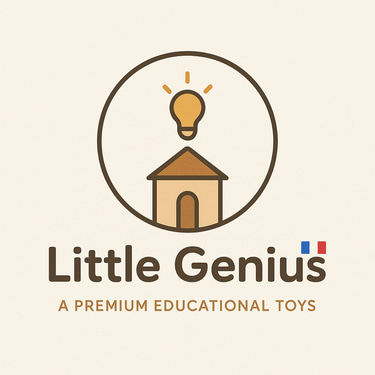Unlock joy with our toy discounts!
Montessori Toy Rotation 101: How Fewer Toys Create Better Learning at Home
Many parents feel overwhelmed by toy clutter and wonder if their toddler really needs so many toys. This article would introduce the popular Montessori concept of toy rotation, showing how having fewer educational toys out at once can lead to deeper engagement and learning. It offers practical tips to set up a simple rotation system and declutter the play area, emphasizing the emotional benefits of a calm, organized space (better focus and less overwhelm for both child and parent). The tone is reassuring and practical, helping readers see value in quality over quantity. For example, it can mention rotating toys from different categories – one week a set of wooden blocks, next week a puzzle from our Educational Toys collection – to keep play fresh and purposeful.
2/3/2025


Do you ever find yourself overwhelmed by the sheer volume of toys scattered around your home, wondering if your toddler really needs all of them? If so, you’re not alone. Many parents today face the challenge of managing clutter while providing a nurturing play environment. Thankfully, the Montessori concept of toy rotation offers a practical, effective solution.
Why Toy Rotation Works
The principle behind Montessori toy rotation is straightforward yet powerful: fewer toys lead to deeper engagement and more meaningful play. When children have fewer options available, they naturally focus longer, explore more deeply, and learn better. This intentional approach to playtime supports cognitive development, creativity, and emotional well-being, benefiting both children and parents.
Setting Up Your Montessori Toy Rotation
Creating your own toy rotation at home is simple. Follow these practical steps to get started:
Step 1: Declutter and Categorize
Begin by gathering all your child's toys. Sort them into different categories such as puzzles, blocks, imaginative play, and educational toys. Aim to select a manageable number from each category to remain accessible, storing the rest away temporarily.
Step 2: Create a Rotational Schedule
Choose a rotation frequency that suits your family, typically weekly or bi-weekly. Each time you rotate toys, swap out the current set with toys stored away. This refreshes your child’s interest and keeps playtime exciting and purposeful.
Step 3: Keep It Accessible and Inviting
Arrange the chosen toys neatly on low, open shelves or in baskets, clearly visible and easily accessible for your child. This encourages independence and invites focused, self-directed play.
Example Rotation Schedule
Week 1: A set of wooden blocks and an educational puzzle
Week 2: Shape sorters and sensory toys
Week 3: Imaginative play sets and a train set
Benefits of Toy Rotation
Improved concentration and creativity: Children engage longer and more deeply when fewer distractions are present.
Reduced stress and clutter: A tidy and organized play area creates a calm environment, reducing overwhelm for both parent and child.
Quality over quantity: Emphasizing fewer, high-quality educational toys promotes intentional and enriching play experiences.
By embracing Montessori toy rotation, you’re providing your child with a nurturing space that supports their natural curiosity and growth. Try implementing toy rotation in your home and experience firsthand the positive changes in your child's play and your family's daily routine.
